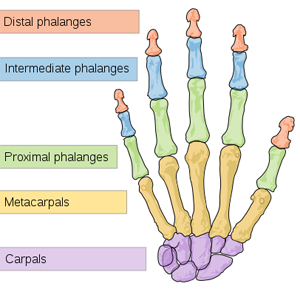1. Here are a few abbreviations used on this site:
- MA - Motor Apparatus (from fingers to shoulder)*
- RH - right-hand
- LH - left-hand
- HS - hands separately
- HT - hands together
* In everyday language, the motor apparatus or locomotor system (Neuhaus: „двигательный аппарат”) of a pianist refers to the hand as the “superior member”, even though it is evident that the basis for every movement of this apparatus is a firm contact between the feet and the floor. Proof: try to play while slightly raising the feet 😊 Raising the feet off the floor immediately modifies the center of gravity and only experienced pianists can keep the balance!
2. The differences between everyday, scientific and pianistic language can be at the root of poorly understood pedagogic notions. From an anatomical viewpoint, the hand makes up the last part (distal, i.e. distant) of the superior member (going from the wrist downwards).
On the other hand, in everyday and pianistic language this term often describes the entire member. For example, we say “hands up” and not “arms up” or, even worse, “upper members up!” 😊
As a general rule, on this site I use day-to-day expressions and if there is any doubt, I will try to be more precise.
3. Units = segments = members
- These are the elements that make up the motor apparatus. They can be close or distant.
- A close unit = proximal, superior.
- A distant unit = distal, inferior
- It is about the distance of a given unit in relation to the fixation points (of the hand or the finger).
- Examples:
- The arm is a close unit = superior and the forearm is a distant unit = inferior.
- The close phalange is the one that is closest to the metacarpal bone; it is the superior member of the finger.
4. Hand and phalanges

Bones of the left hand - dorsal view
Figure: Wikipedia
- Phalanges are the bones of the fingers. They can be:
- distal = distant members
- intermediate = peripheral members
- proximal = basic members
- Peripheral joints of the fingers = distant joints, below the metacarpal bones.
5. Metacarpal “ossicles” (knuckles) - important, this is not an anatomical expression!
Computer: move the cursor over the image above.
Phone: open the animation.

The expression “metacarpal ossicles” (used by Neuhaus and on this site) refers to the metacarpophalangeal joints found at the base of the fingers where they join the hand.
Metacarpal “ossicles” make up the all-important pivot points that regulate the force of the “rear guards” that must arrive at the “front line”, in other words, the precise contact between the finger and the key.
In the Polish and Russian pianistic tradition, the term “ossicle” (“косточка” in Russian and “kostka” in Polish) refers to the joint situated at the base of the finger. This term is not very logical, because it is not about the entire metacarpal bone, but only its distal end . Nonetheless, since this noun is still used in the Polish and Russian languages, I will continue to use it here in the English version in order to avoid any confusion. You will find additional information about how the ossicles work in many chapters.


